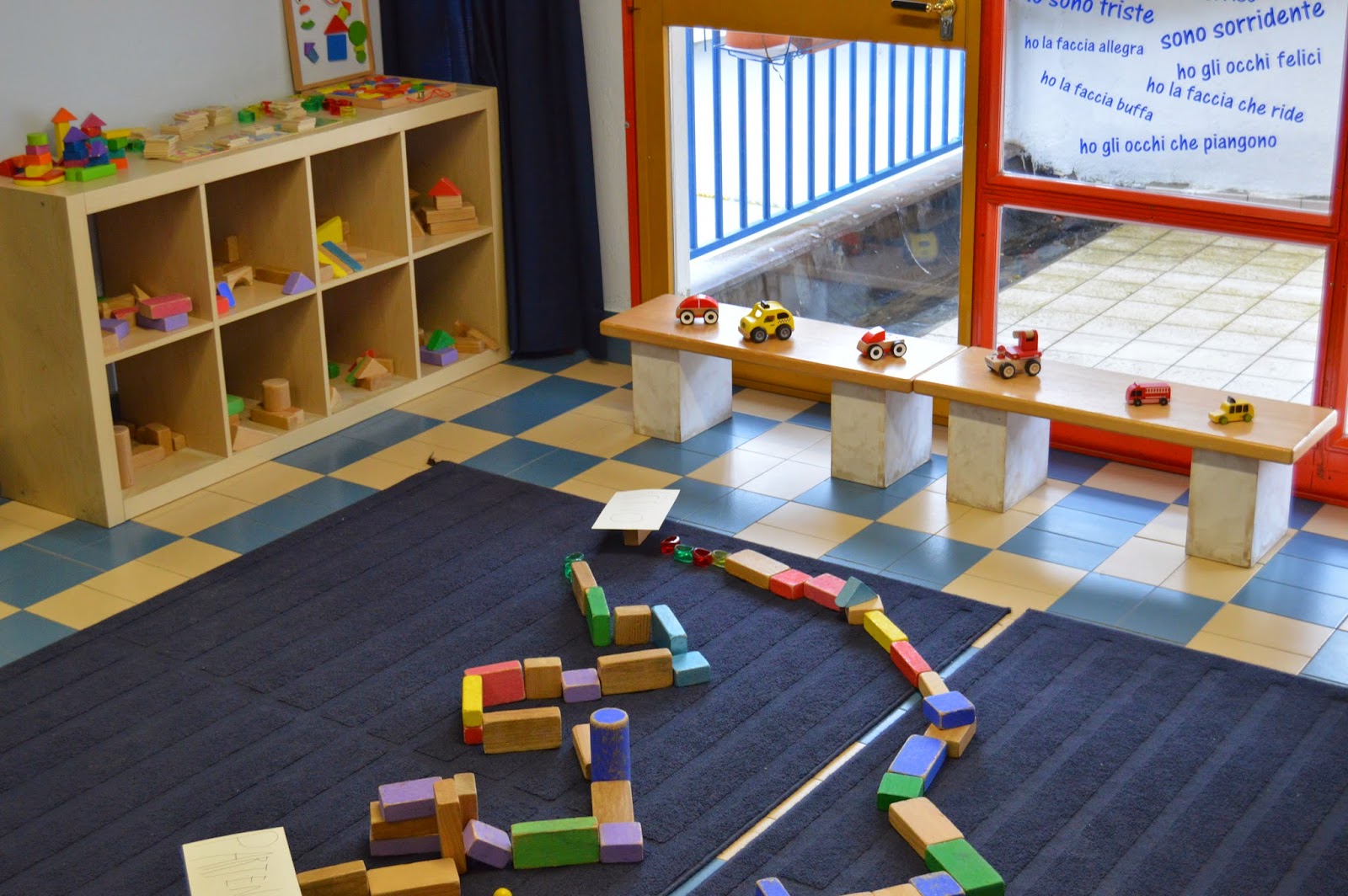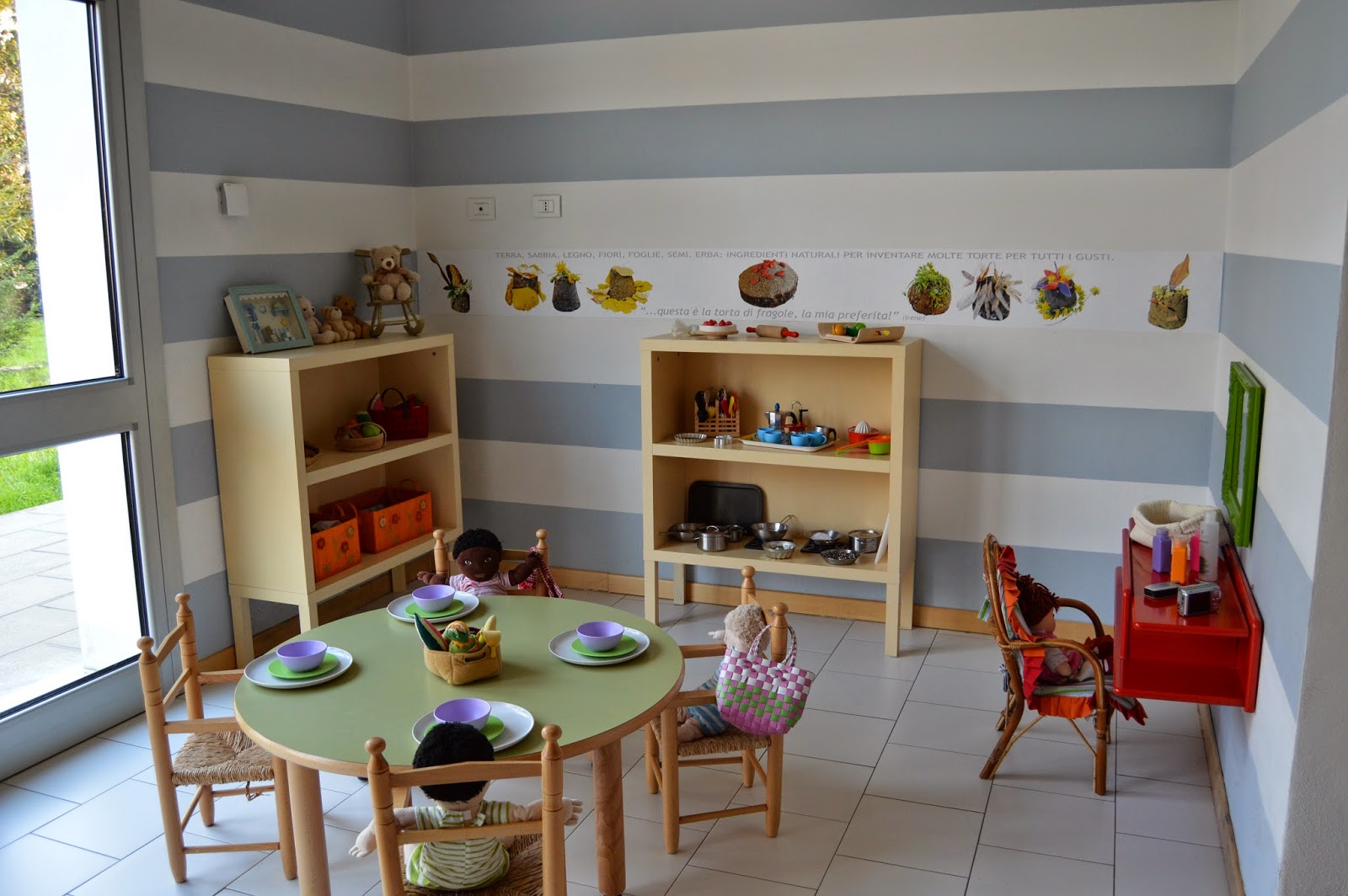"The environment should act as an aquarium which reflects the ideas, ethics, attitudes, and culture of the people who live in it. This is what we are working towards." -Loris Malaguzzi
An environment rich in materials is integral to what we saw in the schools in Italy that we visited. An organic relationship exists between quality spaces and deep learning. Teachers create predictable, organized prearranged spaces in order to invite learning. All adults in the school value all the spaces for the children. This global quality of space results in everyone treating all the spaces with respect and care. Living in a group can be tiring for children and adults, so great care and thought are taken to create calming aesthetics. Geography of space invites small groups, large groups and individual time, in order to facilitate engagement and relationships. The environment and purpose of the space is so crystal clear for the students that no direct instruction is needed. The spaces provide opportunity for open-ended discovery and learning leading to greater creativity and the highest levels of understanding.
 |
| Construction Room |
 |
| Art Studio |
 |
| Group time and reading nook |
 |
| Symbolic (Dramatic) Play |
 |
| Intelligent Materials for Atelier of Light on light table |
 |
| Intelligent Materials for Atelier of Light |
 |
| Outdoor classroom |
 |
| Reading area |
The Laboratory of Words
While visiting the Marino Marini school, we went into one of the classroom spaces where we saw a small group of children working at a table. We asked one of our fellow Italian speaking teachers to ask them what they were doing. One of the children replied, "Writing, of course," as if we were not quite smart enough to figure it out for ourselves. "This is the laboratory of words," she said. We looked around and then saw there were a variety of writing utensils, pieces of paper, a computer, and on the walls pictures and documentation of children writing. We had our "ah-ha" moment at that point. The environment so clearly dictated what was to be done in the space that they children knew, so very obviously, what their purpose was in the space.
"Stand aside for awhile and leave room for learning, observe carefully what children do, and then, if you have understood well, perhaps teaching will be different from before."-Loris Malaguzzi
 |
| Children writing in Laboratory of Words |
 |
| Dr. Ethridge with students in Laboratory of Words |
Before and After
The week before we visited Italy, the town of Pistoia
experienced a storm with hurricane like winds and left destruction all over
this small town. As we walked the streets, we noticed evidence of the storm
everywhere we looked—broken branches, trees down, destroyed fences, bus stops,
and gardens. When we arrived on Thursday at the Marino Marini Preschool/Area
Bambini Verde, which is located just outside the city proper in the beautiful
Tuscan country side, the staff immediately warned us about the destruction of
their “garden” space. They shared that there were parts of their campus that
were destroyed in the storm, including their greenhouse and one of their
favorite very large old trees in the place where children would play and learn
daily. The community was obviously upset and saddened by the destruction from
the storm.
But, the teachers realized that this was a time to take a
moment to teach children something valuable. Instead of sweeping away the
destruction, wreckage, and debris from this traumatic event, the turned it into
a teachable moment, turning it into their next project of study. The children
were given time to reflect on what had happened, what it had looked like and
been before and what it was after. They were given time to process and learn
about their emotions. The teachers took them outside and let them see and be
emerged in the destruction. The students collected items from the storm—leaves,
twigs, branches, pine cones, seeds, dirt, rocks—and brought them into the
classrooms. They were exploring and using these items the day of our visit,
making them into new things. This enormous fallen tree that had given them so
much joy over the years was still providing learning opportunities for them
even as it lay broken and dead on the ground.
This experience hit home to us as we thought back to our own
experiences on the GCS campus, with our own fallen trees and destructive storms
that we have endured over the years. We want to bring this spirit of shared
community, learning, and growth to all at our school. To discover how we, as
adults, can help allow young children to talk about difficult subjects that we
may think to avoid, but are so very important in growth and development.
Through this collaborative process, their community began to heal together and
recover from a traumatic event and in turn taught the children how to process
and deal with the hard things in their own lives.
 |
| Natural intelligent materials |
 |
| Sensory table full of branches collected from fallen tree |
 |
| Creating with sticks from fallen tree |
 |
| Creating patterns with natural found materials |
Field Trip as Catalyst for Learning
The children at the Marino Marini school visited the town of Pistoia as an inspirational field trip to begin to learn more about where they live.The children took pictures of the buildings and streets while they were on their trip. They came back to the school and used what they had seen as inspiration to study more about the buildings in their town. The teachers provided pictures and materials to the children so that they could begin to construct their learning through a variety of languages...drawing, writing, painting, construction. Their environment a is the inspiration to learn and grow.
"The child has a hundred languages, a hundred hands, a hundred thoughts, a hundred ways of thinking, of playing, of speaking. A hundred, always a hundred ways, of listening, of marveling, of loving. A hundred joys for singing, for understanding. A hundred worlds to discover, a hundred worlds to invent, a hundred worlds to dream." -excerpt from the
Hundred Languages poem by Loris Malaguzzi
Until next time, ciao!
Kirsten and Laurie








































































